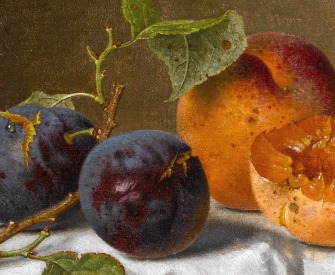Parrhasius entered into a pictorial contest with Zeuxis, who represented some grapes, painted so naturally that the birds flew toward the spot where the picture was exhibited. Parrhasius, on the other hand, exhibited a curtain, drawn with such singular truthfulness that Zeuxis, elated with the judgment which had been passed upon his work by the birds, haughtily demanded that the curtain should be drawn aside to let the picture be seen. Upon finding his mistake, with a great degree of ingenuous candor he admitted that he had been surpassed, for that whereas he himself had only deceived the birds, Parrhasius had deceived him, an artist.
There is a story, too, that at a later period, Zeuxis having painted a child carrying grapes, the birds came to peck at them; upon which, with a similar degree of candor, he expressed himself vexed with his work, and exclaimed, “I have surely painted the grapes better than the child, for if I had fully succeeded in the last, the birds would have been in fear of it.”
From Natural History. Reveal-ing the Greek’s veneration of mimetic art, the first story is often cited as the foundational example of trompe l’oeil painting in the West. Completed in 77, the encyclopedia remained authoritative throughout the Middle Ages. While commanding a fleet in the Bay of Naples in 79, Pliny went ashore to investigate a strange cloud formation, perishing in the eruption of Mt. Vesuvius.
Back to Issue



